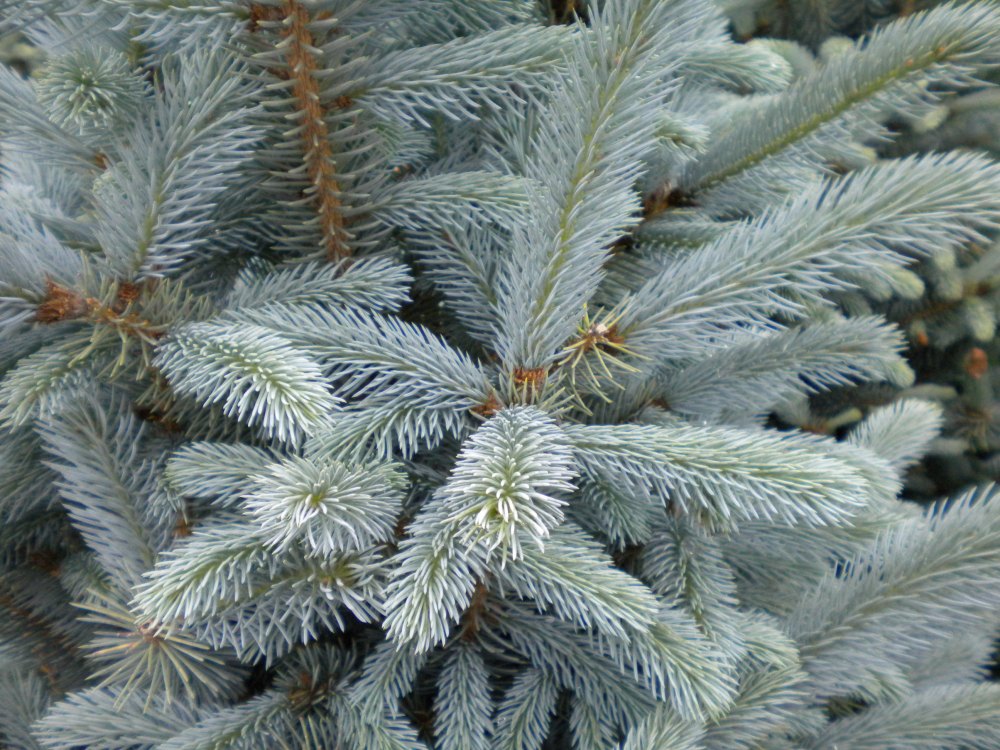I thought there were more evergreens in the garden, but looking about on a cold winter afternoon I’m surprised by the openness, the lack of enclosure, even in a mature garden with dozens (perhaps too many dozens) of large trees and hundreds (yes hundreds!) of shrubs. This place is a jungle late April through early November. Then, you can barely see where you’re walking, much less across the garden, but now I can see neighbors’ houses to the south and west property lines. I try not to look in those directions.

The long boundry to the north is the sunniest border in the garden, and here large evergreens shelter the winds and shield the view of the closest neighbors. In this mixed garden that runs roughly parallel to the property line (but with a nagging gap that requires mowing) there are cherries and dogwoods, a magnificent weeping beech, and katsura, but also large evergreen Colorado spruce (an assortment of grafted blues), two varieties each of cryptomeria and southern magnolia, cypress, and a collection of tall hollies covered in red berries that the birds will feast on as the winter progresses.
Between the tall borders (a sliver of mature maple and poplar forest runs along the south and west border) there are numerous evergreens, some rather large, and others, dwarf types (though they may have grown larger than you or I would expect). No matter the season I am fond of the evergreens, but they stand out so much more today, and since there are no blooms in the garden in early January, this seems appropriate for today’s chat.

By number there are more spruce varieties, mostly Colorado spruces with varying shades of blue (above), each the color of a clear sunny sky until placed next to another, which makes one or the other dull by comparison. With space between, each is extraordinary. My particular favorites are the more dwarf, but not miniature, pendulous and globose spruces that are appropriate for planting in all but the smallest properties.

Two Acrocona spruce (Picea abies ‘Acrocona’), though young, are quite marvelous in spring when new pink/red cones form at the branch tips. The irregular growth habit could be more precisely called ‘flopping about’ than the broad upright that it will become with age, for it has no form, neither weeping nor upright, but displays branches splayed in every direction. Though rarely sold in garden centers, this is a gem, albeit an oddly shaped one.

The seed cones of the Korean fir ‘Horstmann’s Silberlocke’ (above) are no less beautiful, though more concealed by the curved, silver-backed needles. This is a unique, slow growing conifer that is not well suited to the summer heat of Virginia, but struggles along with a bit of shade from the late day sun.
Descriptions of weeping and dwarf are cast upon a surprising number of conifer forms that seem to defy these categorizations. Particularly, the weeping forms of Norway spruce might hug the ground or ascend straight to the heavens, though with pendulous branching. Many weeping conifers are trained onto a three foot stake so that the growth habit might not be readily apparent, but in either form these are excellent evergreens demanding notice in the garden.

Many of the conifers with colors of yellow and gold (mostly Chamaecyparis, or cypress) fade with the lack of sun through the winter, but ‘Gold Shower’ Lawson cypress (above) remains a beauty with arching branches with blue green foliage that will turn bright yellow with new spring growth.
The conifer shades of blue and green are not dependent on the sun, and these are most treasured. And so, with each journey through the winter garden the list of have-to-gets grows longer.
We have a major problem with moles and voles in our yard. Their tunnels are very obvious and I’m afraid of what they are doing to our plant roots. Meadows Farms did our landscaping 3years ago (and we are so happy with it) but I’m worried. How can we rid our yard from these nasty critters?
I have experience with moles only once, and am rid of them due to the efforts of our sister Louisiana Leopard dogs, Daisy and Minnie. Their hunting genetics were put to use in sniffing to determine their location, then quickly digging and snatching them, to no good end for the poor moles.
Otherwise, I have no worthy advice, but here is a link that might prove helpful http://www.ppdl.purdue.edu/PPDL/expert/Moles.html.